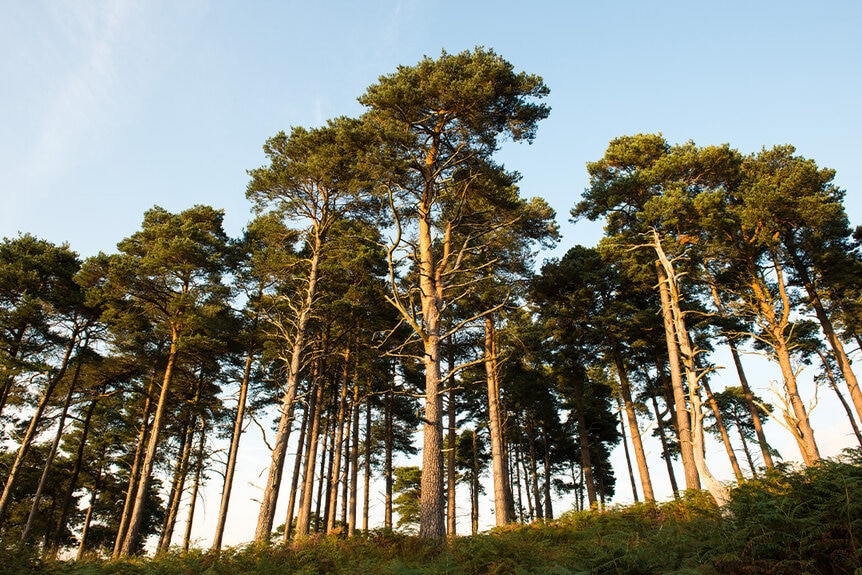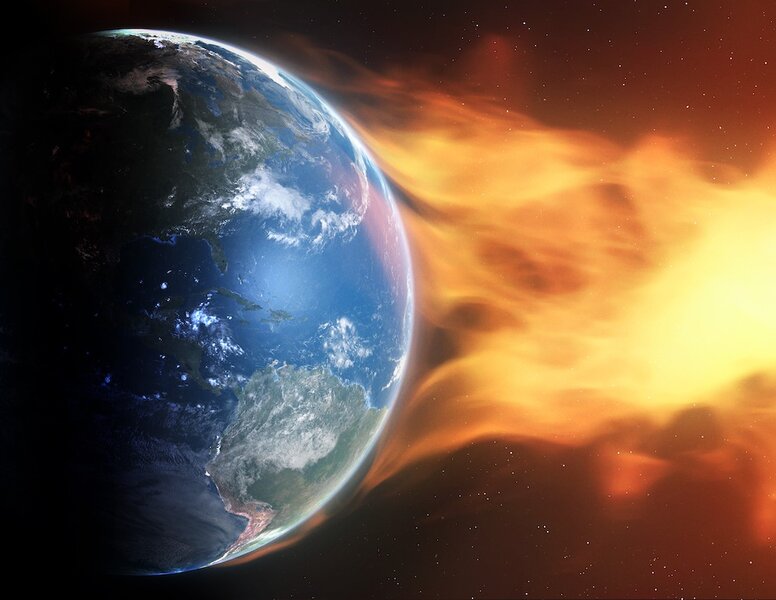Create a free profile to get unlimited access to exclusive videos, sweepstakes, and more!
Ancient Solar Storm Captured in 14,000 Year Old Tree Rings
A storm 10 times more powerful than the famed Carrington Event.
The most intense geomagnetic storm in recorded history happened in September 1859. What became known as the Carrington Event was likely triggered by a coronal mass ejection (CME) striking the atmosphere. In Solar Attack (streaming now on Peacock), world leaders must defend against an even more intense solar storm, powerful enough (with the help of methane in the air) to light the sky on fire.
In the real world, the Carrington Event didn’t light the sky on fire, but the excess energy dumped into the atmosphere from charged solar particles was so intense that auroras were reported around the world and fledgling telegraph lines burst into flames. If a storm of the same magnitude happened today, it would have an untold impact on global communications technology, potentially bringing our societies to a standstill.
RELATED: Cannibal Coronal Mass Ejection on Collision Course With Earth
And it could happen, scientists recently found evidence that a geomagnetic storm 10 times the strength of Carrington struck the earth 14,300 years ago.
Ancient Solar Storm 10 Times More Powerful Than Any in Recorded History
While humans were around 14,000 years ago, they weren’t exactly writing down what they saw. At least not in any way we can interpret. Trees, however, are fantastic at recording environmental changes in an area and preserving those changes in their rings. A recent study, published in the Philosophical Transactions of the Royal Society A: Mathematical, Physical and Engineering Sciences focused its efforts on a collection of ancient Scots Pines found at the Drouzet watercourse in the Southern French Alps.
There are 172 subfossil trees (trees in the process of fossilization which still retain biological material) in the area, dating to between 14,400 and 13,700 years ago. Those trees lived at the tail end of the last ice age and were later buried in loamy deposits where they were partially preserved. Their fractured trunks are all that remain, exposing the inner rings and giving researchers a glimpse into the deep past.
With a reliable century’s-long record in hand, researchers went hunting for signs of solar storms. Fortunately, they already knew what to look for. As solar flares and coronal mass ejections strike the atmosphere, they dump a lot of charged particles into the air. The Earth’s electromagnetic field does what it can to bounce it all back into space, but some of the solar shotgun blast gets through.
RELATED: Incredible Satellite Image of Aurora Over Canada with City Lights… And Something Else
Traveling along magnetic field lines, the charged particles interact with molecules in the atmosphere, causing them to light up in brilliant aurora. They also cause chemical reactions, triggering a rapid burst of carbon isotopes. Scientists hypothesized those carbon isotopes would get gobbled up by trees and written in their rings, and they were right.
Combing through the Drouzet tree record, researchers found an abrupt spike in carbon isotopes 14,300 years ago, with an approximately century-long tail. Humans alive at the time might have seen a burst of light in the sky, followed by intense global aurora a few hours later. If they’d had any communications satellites in orbit, they almost certainly would have been fried. Electrical lines and transformers would have been overloaded and their entire infrastructure might have collapsed.
Of course, those things didn’t happen because they didn’t have those things. They weren’t reliant on technology, not just to keep them connected, but to survive. We are. Fortunately, geomagnetic storms of that magnitude are pretty rare (if they weren’t, we wouldn’t have to study ancient trees to find them) and scientists are hard at work studying the Sun to better predict its tantrums and, hopefully, protect us from the big one when it comes.
Things could be worse, you could live on the version of Earth in Solar Attack, streaming now on Peacock!
































